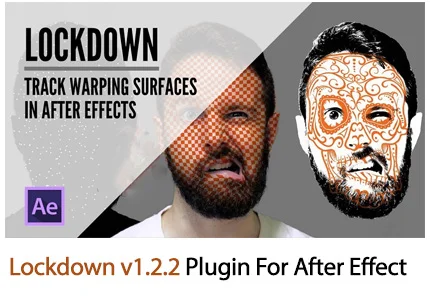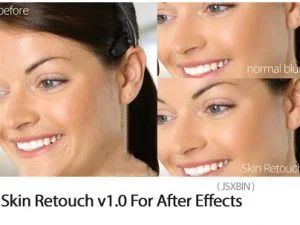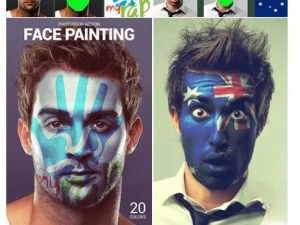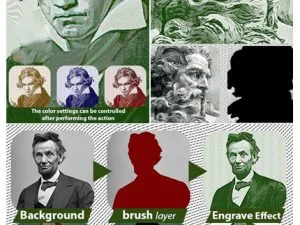Lockdown v1.2.2 Plugin For After Effect
Lockdown plugin v1.2.2 for After Effects software
This section includes the Lockdown plugin version 1.2.2 for Aftereffect software, which is available for download on the site. With the help of this plugin, you can stick an object on moving objects.
Lockdown v1.2.2 Plugin For After Effect
Lockdown 2 is here! Lockdown is the original and best plug-in that allows you to track warping surfaces inside After Effects. Perfect for beauty retouching and other previously difficult cleanup jobs!
Lockdown 2.5 Quickstart Videos
Choosing a Lockdown Frame
To set the frame you’d like to paint or apply graphics to, press the “Set Lockdown Mesh/UV Frame” button. It will create a green bar in the popout timeline. The Lockdown frame is no longer set by the “Lockdown!” Button. This is honestly the slowest and most boring tutorial I’ve ever made, but if you’re even slightly confused by the concept of what the “Lockdown frame” is, please watch it. This feature will release with Lockdown 2.5.
Pre-composing and setting up your footage/composition for tracking (After Effects)
The layer that Lockdown is applied to, and the Composition that layer is in, must have the same resolution and framerate for Lockdown to work. If you aren’t 100% sure how to set that up on your own, just press the Pre-compose button at the top of the plugin. The script will pre-compose your layer and set everything inside the pre-comp to all the correct settings, and you can work with Lockdown in there.
Tracking algorithms and how to tweak them
There are two tracking modes:
Accurate 1.6: Fast, and good for simple shots with lots of detail.
Extremely Accurate: Slow, but better than ‘Accurate 1.6’ in every other way. Increasing Tracking Scale can slightly improve the results of Accurate 1.6 when objects are moving quickly, however you won’t get much better results above 25 pixels, except in extreme cases. At that point, you’re better off just using “Extremely Accurate”.
Tracking Target Resolution: There are two steps to tracking, one of which is tracking the general motion of the shot, the second is finding a pixel accurate match. Lowering the ‘Tracking Target Resolution’ ONLY reduces the resolution of step 1. Some people assume tracking a 4k shot at 540p will reduce quality, and the vast majority of the time it will be a pixel perfect match against if you had run the process at 4k, because the secondary processing to pixel match is at 4k for both cases.The summary- track at 540p as often as possible. Sometimes you may want to bump it up to 1080p because the Accurate 1.6 mode isn’t as good at working with low resolution video, and this might prevent points from skipping around. But again, ‘Extremely Accurate’ is probably a better solution than tinkering with Accurate 1.6.
Track Adjustment
When a point drifts away from it’s target, click and drag it to put it back in place. Adjustment keyframes are an additional layer of animation that adds on top of your base track. It’s a very fast way to fix drifts.
Track Refinement
Refinement is for when Adjustment isn’t enough, and you have to deal with a track that’s going in the completely wrong direction. it’s a hugely important concept, please see this video:
Tracking Offscreen Objects, and Expanding Your Mesh
The two different interpolation types (tracking planar surfaces, or non-planar surfaces)
Tracking behind overlapping objects
And please check out this video if you have any difficulty setting up the masks in Resolve. The short summary is your RGB channels should be completely unaffected going into Lockdown, and your alpha channel needs to be below 50%.
Stabilized Tracking
This feature will release with Lockdown 2.5, thank you for your patience.
Caching Track data (Make high res video track quickly)
In short, just open the options menu, and enable the disk cache. This will make it so after you’ve tracked a shot once, it maintain that tracking data, and track very quickly every time following. This uses as much disk space as you allow, which is why it’s off by default.
Customizing a mesh
Sometimes it makes sense to draw your mesh manually, to conform to natural borders in your shot. The geometry on the left may deform better than the geometry on the right, especially when the mouth opens, or when imported into a 3D application.

Select a point, then Ctrl-Shift-Click another point to connect the two with an edge.
Alt-click an edge to delete it.
Alt-shift-click and drag to draw a line which deletes all edges in its path.
Auto-Triangulate Mesh will triangulate all points can, but will NOT bisect any quads. (This is good because quads render better than triangles in 3D software)
Clear Mesh will remove the entire mesh.
Video Summary:
Locking down your mesh and applying a texture (After Effects)
This button sets up a texture to apply to your mesh.
It creates a “Lockdown Graphics Composition” with a stabilized copy of your mesh inside, and a still frame of the frame you’ve chosen to stick graphics to. It creates a checkerboard for preview purposes. The stabilized layer is created as a non rendering guide layer.
It places this composition in the Lockdown Graphics Comp slot to reference the texture.
It duplicates your layer as a background layer.
If you’re applying graphics, just drop graphics into the stabilized pre-comp. If you’re painting the layer, you should apply paint directly to the stabilized video layer inside the Lockdown Pre-comp. You must first make it not a guide layer, this video explains why:
Optional Tracking Filter (After Effects)
This optional button applies effects that sometimes allow our tracker better identify textures. It’s basically an edge-detect with a lot of contrast. You should be in 16 or 32-bit mode when using this filter. Running a denoiser on the original footage, and again on the final result also improves trackability. This is great for a shot where lighting is changing, because it brings out details in cracks and surfaces, and tends to ignore larger gradients. It’s great for faces, where there is tons of detail to be tracked in the pores of the skin. Without the filter, the tracking points may follow shadows and highlights sliding across the face, rather than the skin. With this filter, they will lock onto pores and skin details. Keep in mind this filter becomes far less effective with compressed video, like mp4. This video explains:
Rotoscoping using Lockdown
The short summary is that when you stabilize your composition, you can create masks over the stabilized footage, which will follow the motion of your shot. Here is a fast overview.
Exporting To Alembic (Cinema 4D)
Advanced Controls (After Effects):
Stabilized
This is automatically set by the Plug-in and script, you should never have to think about it. However, for advanced users, it simply toggles whether the mesh is stabilized or moved. Useful if you change a few tracking points on your stabilized comp, then want to copy and paste your Lockdown effect to your un-stabilized comp. You can just paste then toggle Stabilized to off.
Internalize Selected Points
This puts all the points INSIDE the plug-in away, from your view. This is going to make every step of working with Lockdown faster. Tracked points are internalized by default.
Externalize Selected Points
This takes your selected points, and exposes them as normal position keyframes at the bottom of the Lockdown Plug-in, under the “Externalized Points” dropdown. You should only ever externalize points when you notice errors in the track and want to modify them. Whenever you’re done editing points and want to start building a mesh, re-internalize them. It’s not recommended to use expressions with these points, or connect them to outside rigging, at this point it’s something we haven’t tested. We are currently allowing externalized points to be used as part of a mesh with the hopes that eventually this will become advantageous, but please just internalize your points in all normal situations.
Externalized Points
You are given 4 total points which you can manually edit within the typical After Effects graph editor. This used to be 500, but we found that it was causing significant slow down with user interaction speeds.
To get points in from Mocha, you can paste the four corner position data into the externalized points. Upon pasting, an externalized point will be created. Again, please internalize these as soon as possible.
Internal Keyframe time ref
This is a reference keyframe. A big problem with Lockdown’s internalized keyframes is that they are ‘oblivious’ to what timecode they should appear at. Whenever you track, Lockdown takes this keyframe, and places it at the in-point of the shot. All the internal keyframes look at this keyframe and say “I should appear x frames after this reference keyframe” in order to stay in sync with the rest of the project. Please note that you should never have to touch or think about this parameter if you use the script and follow the steps from 1-9. The most common place this may be useful is if you’re conforming color footage, and the timecode changes on a clip when you do a footage swap. For a simple example:
You track some raw footage which is 45 seconds long. Your in-point is at 30 seconds in. When you track, Lockdown places the “internal keyframe time ref” here, at your in-point. Now you receive some new footage back from a colorist, but it’s only 10 seconds long. If you paste Lockdown to the color footage, the timecode isn’t the same, so Lockdown doesn’t know which frames it’s keyframes should be on. You can find the same exact frame in the color footage, and slide this “internal keyframe time ref” to its position, and now the tracking will match exactly, even though the timecode is different.
Go to https://aescripts.com/learn/aescripts-aeplugins-manager-app/
Download the manager app and launch it.
(If you’re using the trial or beta) Go to Account/Add Trial and add Lockdown.
Select Lockdown in the main menu list.
Press Install.
Press License.
How do I manually install Lockdown 2.4 (Resolve)?
Go to aescripts.com/lockdown (Top of this page)
Press the green “Try” button to access the downloads, and download/unzip.
Enter the Windows folder for a Windows install, copy and paste the .ofx plugin file here: C:\Program Files\Common Files\OFX\Plugins\Vranos
Enter the Mac folder for a Mac install, copy and paste the .ofx file here: /Library/OFX/Plugins/
(Please note that the OFX plugins in the Windows folder and Mac folder are NOT interchangeable)
Go to aescripts.com/downloadable/customer/products and find your license code. It takes about 15 minutes to generate after purchasing.
Copy your License Code.
Apply Lockdown to an empty layer.
Press “License” at the top of the plug-in.
Paste in your license code.
Press “activate”
How do I manually install Lockdown 2.4 (After Effects)?
Go to aescripts.com/lockdown (Top of this page)
Press the green “Try” button to access the downloads, and download/unzip.
Enter the Windows folder for a Windows install, copy and paste the ..aex plugin file here: C:\Program Files\Adobe\Adobe After Effects 2021\Support Files\Plug-ins
Enter the Mac folder for a Mac install, copy and paste the .plugin file here: Applications/Adobe After Effects 2021/Plug-ins/
Go to aescripts.com/downloadable/customer/products and find your license code. It takes about 15 minutes to generate after purchasing.
Copy your License Code.
Apply Lockdown to an empty layer.
Press “Register” at the top of the plug-in.
Paste in your license code.
Press “activate”
In After Effects, go to Edit/Purge/All Memory & Disk Cache
Sometimes I crash (out of memory) when tracking high res footage, or very long footage (Ae)
In After Effects, go to “Preferences/Memory & Performance/RAM reserved for other applications”. By default, it’s set to something like 3gb. Try to set this number very high. If you have 32gb of RAM on your computer, maybe try releasing 16gb. We’re digging into an official fix, but at the moment, Ae and Lockdown aren’t properly sharing RAM. Ae is battling to create a RAM preview with as much RAM as it can get it’s hands on, and Lockdown needs a good amount for the motion vectors, point data, etc… Sometimes the system runs out. It’s our top priority fix this. You should really only be seeing issues in extreme cases where Lockdown may need an unusually high amount of RAM for high res footage.
I’m missing install files that I’ve seen in older versions or tutorials. I also get the “Unable to execute script at line 4” error when running the Lockdown script.
Lockdown 2.2 and later ONLY requires a single self contained install file. It’s Lockdown.aex for Windows, Lockdown.plugin for Mac. You may still have the following files in your computer from older versions. You can safely delete these from the “Plug-ins” and “script UI panels” folders:
GenerateVectors.aex
GenerateVectors.plugin
Lockdown.JSXBIN
GV.aom
The JSXBIN side script is not used in later version of Lockdown, and running it will give you an error message. Please delete that script entirely, and follow the latest tutorial on this homepage to run Lockdown.
How do I get rid of the grid watermark?
When you buy the Plugin (or get a temp license), you’ll get access to a code that looks something like this: VRL*YOUR*NAME*LOTSOFLETTERSANDNUMBERS
Apply the Plug-in to a layer, then at the top of Lockdown, press “register”. Paste this code in, and press activate. The watermark will still be there. To clear it, go to the After Effects Menu “Edit/Purge/All Memory & Disk Cache”. This forces Lockdown to re-render, this time without any grid.
The “UnLockdown” button breaks my Lockdown 1.4 projects, when opening with Lockdown 1.5.
Sometimes I get dark edges on my composition
Please either shut off your stabilized footage layer inside the stabilized pre-comp, or add a 4 pixel simple choker to it. Effect/Matte/Simple Choker. This video shows how to solve the problem. Fixing this is somewhere on our to-do list, but honestly it’s very low priority because a comp fix is so easy. Sorry for the inconvenience, we figured you would rather we focus on faster and more accurate tracking.
How do I get motion blur on my shot with Lockdown?
Please use the effect “CC Force Motion Blur” after Lockdown. Shut off “override shutter”. Turn motion blur on for the layer, and in the composition. In the composition settings, make sure the shutter phase is (shutter angle * -.5). CC Force Motion Blur with Lockdown.
I want to make a mesh larger than my actual video, that extends off my frame. Can I do that?
Lockdown 2.0 can place points outside of the composition, but you can’t place textures there. Lockdown is limited to the bounds of the composition. There is a relatively easy workaround. Let’s say you have 1920×1080 footage. After running out 1) pre-compose script, go into that composition. Set the resolution of the composition much higher, perhaps 3000×2000. Now take that layer (delete the Lockdown instance on it.) and pre-compose that layer “moving all attributes”. Now place Lockdown on that composition, which is 3000×2000. You can now track THAT composition. If you don’t do this correctly, things will go bad very quickly.
How do I create a log file?
Please watch this video. Log files contain a record you can send to us, that tells us basically everything that happened since you opened Lockdown, until you closed it. It makes it much easier for us to find bugs. Please make sure to delete the log folder after sending us the log, because the log file will get very very large over time if you keep the folder. Basically, if the folder exists, the log file is created and written to. If not, the log file is not created or written to. So you don’t want the log folder to exist for any longer than it needs to be.
Lockdown turns a clip black, and nothing works
Please make sure you’re using the CURRENT version of After Effects. We built Lockdown with the 2019 API, so it’s a guarantee 2018 and earlier will not work at all. We keep it up to date with the latest version of Ae.
Some users report they have to update their graphics card drivers to get Lockdown working. More troubling, some Nvidia users claim GeForce experience says it’s up to date, but they had to go to the Nvidia website to manually update drivers before Lockdown would work. Our team on Lockdown updates our graphics drivers immediately, so to minimize the chance of rendering errors, please stay up to date with your drivers.
After effects templates
Amazing clips to use and help you create your own unique projects from AE templates or to improve the design of your existing broadcasts.
We have a wide range of templates for you to choose from. You can find PowerPoint Video Templates, Motion Graphics Templates, and After Effects Logo Templates, Scripts, Promos, news, fashion, sports, social media, titles…
After Effects Templates, Wedding Templates as well, After Effects Intro Templates, Transitions, Products Promos, Instagram stories, Scripts, Call Titles, Elements 3D, Corporate , and many more.
With After Effects project files, or templates, your work with motion graphics and visual effects will get a lot easier. In short, they are customizable After Effect files, neatly organized and labelled. You can easily change colors, text and other design elements without having to spend time on creating timelines and effects. It’s all there-you just need to customize it to fit your project.
What you waiting for? Hurry up and download the best after effects templates
➡️ ➡️ For more Ready Project Files Templates 😀 😀
System Requirement For adobe after effects






Reviews
There are no reviews yet.